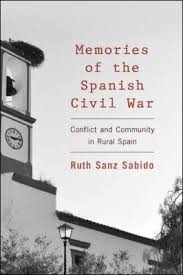Over the course of the early 1930s, dark political clouds began to loom over the continental horizon. In Moscow, Josef Stalin consolidated near-absolute power in the Kremlin, waged a cruel campaign to eliminate the opposition of independent peasant-farmers to the new socialist collectivisation scheme resulting in forced displacement and wholesale slaughter and launched a man-made famine in the Ukraine (known as ‘Hunger-extermination’ or Holodomor) to starve the population into submission. Estimates of the number of innocent lives lost amid the unspeakable suffering of the Ukrainian Famine Genocide of 1932-33 range from 2.4 to 7.5 million.
At the centre of Europe, a once relatively unknown corporal, Adolf Hitler, became Chancellor of Germany on 30 January 1933, managing to browbeat a large segment of the German middle class into accepting press censorship and his appointment as dictator in only a few weeks. In the spring of 1935, he shunted aside the restrictions imposed by the Treaty of Versailles and began military rearmament. Later that year, Berlin introduced and passed the Nuremberg Laws – limiting citizenship to those with ‘Aryan’ blood and outlawing marriages between Germans and Jews. In short order, dissenters and members of ‘inferior’ races were seized and shuttled to concentration camps for a morbid regime of backbreaking forced labour, incomprehensible maltreatment and death.
Contrary to the dreadful plight of both the Soviet Union and Nazi Germany, Spain entered the 1930s by embracing Republicanism and prematurely ending the reign of King Alfonso XIII for backing the dictatorship of Primo de Rivera (1870-1930). In the following months, a socialist government introduced measures to improve the lot of labourers and further secularise society. To defeat a royalist-conservative backlash led by a combination of oligarchs opposed to land redistribution and the religious, tradition-bound rural peasantry, a coalition of leftists formed the Popular Front (Frente Popular) and triumphed in the 1936 elections. It was, however, a pyrrhic victory. Far from accepting the result, right-wing forces allied with General Francisco Franco took up arms and mounted a coup against the government. In the three-year clash between pro-Republicans and pro-fascists, Stalin and Hitler turned the Spanish Civil War (1936-39) into a proxy battle and forerunner to the Second World War by supplying their respective sides with military personnel and weapons. As a result, Spain became a cauldron of despair, destitution and death – a wasteland for individuals and families from Barcelona to Seville.
In Memories of the Spanish Civil War: Conflict and Community in Rural Spain, Ruth Sanz Sabido recovers the stifled voices of the victims of fascism and excavates the buried trauma of past and present generations in a powerful monograph based on first- and second-hand testimonies of survivors in a small village in southern Spain.
Image Credit: (Paco Calvino CC BY SA 2.0)
Rather than a chronological account, a salient and convincing defence of memory studies and its methodological approach opens the first half of the book. Similar to how Japan continues to whitewash the heinous crimes committed by its army in China (particularly Nanking) in the 1930s, since the death of Franco successive Spanish governments have neither admitted the extent of fascist violence nor acknowledged more than 100,000 desaparecidos – men and women forcibly ‘disappeared’ by Francoist forces – who remain unaccounted for and virtually ignored by the current regime. In employing a Foucauldian-inspired ‘Critical Ethnography of Memory’ to her subject, Sabido ably reveals a palpable source of simmering discontent beneath the surface of Spain’s ersatz solidarity.
Indeed, the national narrative of the war – which promotes a false equivalence in suggesting ‘both sides committed all types of aberrations’ – serves the elites in power by suppressing the historical truth as experienced by the nation (9). By allowing her interviewees from Arroyomolinos de León, Huelva Province, to speak directly to the reader and the world, Sabido uncovers long-dormant ‘subjugated knowledge’ and unveils the scale and scope of the barbarism behind the Francoist rise to power.
In Chapter Four, ‘‘‘There Was No War Here’’: Repression and the Civil War’, the author brilliantly exposes the sordid effects of extremism in the community. After initially claiming ‘aquí no hubo guerra’ (‘There was no war here’), the interviewees eventually yield their intergenerational recollections and interpretations of the polarised 1930s. One of the interviewees, Valeria, relays a story about a man dubbed el Cojo de la Pata Palo (‘The lame man with the wooden leg’), a communist or Rojo (Red) who terrorised the village by reportedly breaking into homes and setting fire to religious objects including images of the saints. Despite her right-wing background, however, she adds: ‘Apart from burning saints, the rojos didn’t kill anyone. Most of them were not guilty of anything, only those two or three rojos who were bad’ (85-86). As a conservative woman nearly 80 years of age, her testimony credibly contradicts fascist allegations of rampant communist brutality.
At the same time, many of the interviewees refer to the Francoist murderers as ‘they’, and some of the participants depict Spanish fascism as an external phenomenon imported from Nazi Germany. As a result of being unable or unwilling to accept the indigenous roots of reactionary activity in their village, the 1936 cold-blooded executions of eighteen men transported to the town of Cala, for example, remain an abstraction and still produce anxiety, bewilderment and denial.
The subsequent chapter on ‘Class, Ideology, and Local Community’ highlights the economic motives of the Civil War between anarchist and pro-Republican labourers and pro-Franco elements of the middle and upper classes – including the owners of latifundios (large estates). Beyond class struggle, the nation also sharply divided over questions of church and state. In removing religious icons from public spaces in its drive to secularise the country, the Republican government of the early 1930s antagonised a considerable portion of the public. Upon proclaiming his intention to restore the Church to its formerly ascendant position, Franco inspired his followers to forcibly neutralise or eradicate all opposition in the name of God. Hence, pro-Francoist cries of ‘Viva’ to the Virgen del Rocío (Virgin of Rocío) – a sacred wooden icon in the Hermitage of El Rocío in Almonte (Huelva Province) – ‘[constituted] a disguised shout of ‘‘death to the republic’’’(126).
In an era that witnessed far-reaching advances in the rights of women across the continent and in the United States, Chapter Six, ‘Rojas: Women and the Anti-Fascist Struggle’, outlines the dire consequences of the hyper-masculine, sexist centre of the Francoist worldview. While prison or execution awaited female dissenters, any woman attempting to claim or assert her equal rights as a citizen faced the prospect of being shamed in public (such as through the shaving of heads), tortured or raped. Wives of men suspected of sympathising or collaborating with the Republicans suffered an equally dismal fate. According to Valeria, her mother witnessed and retold the following episode that typified Francoist terror:
One day they [the Francoists] came to pull him [a suspected enemy] out of his house, just there, around the corner. And his wife and his three children were screaming by the doorstep, ‘don’t take him, don’t take him,’ crying. Imagine, that woman, with three young daughters, to bring them up on her own, no salary, no pay, nothing […] it happened to many families, here and in other villages (145).
In fact, the chauvinistic core of the fascist Francoist regime would stunt the lives of countless numbers of women and their families throughout the twentieth century – crimes committed with impunity and still hidden by official gainsaying and a ‘strategy of forgetfulness’.
The horrors of the 1930s resonate eight decades later. In Spain, Francoist violence still survives beneath silent tongues and scarred souls – especially among mothers and daughters. In Memories of the Spanish Civil War, Ruth Sanz Sabido nobly illuminates the dark origins of Spanish fascism in a compelling microcosmic study – one that will hopefully turn the historiography further toward the resurrection of politically interred remembrances and ultimately realign history with veracity.


No comments:
Post a Comment